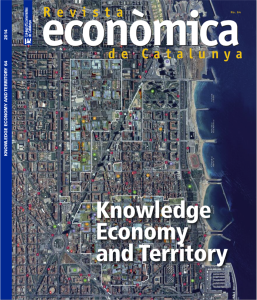 This is a quite old article that Henry Chesbrough and I wrote and got published in English on September 2014 due to the interest expressed by a large number of international delegations.
This is a quite old article that Henry Chesbrough and I wrote and got published in English on September 2014 due to the interest expressed by a large number of international delegations.
Our vision is changing, because Open Innovation is a moving field, particularly in the Public Sector and Smart Cities. However the one that we presented is still in many ways completely valid.
Here you can find the whole article and following the conclusions:
Innovation and cities are two concepts that have always gone hand in hand. Geoffrey West, who for many years was the director of the well-known Santa Fe Institute, has described the positive correlation between the size of cities and their innovation capacity in terms of a power-law (Bettencourt et al., 2007). That is, a city that is 10 times larg- er is 17 times more innovative, but a city that is 50 times big- ger is 130 times more innovative.
Large cities have always been considered places that welcome subcultures (Fischer, 1995) and non-conven- tional residents (Florida, 2005).
In this article, we have described the theory that the prevalent model of innovation in cities continues to be based on a structure of providing predefined services. This model does not include elements that enable cities to reinvent themselves, which is what is sought in smart city proposals (Florida, 2010).
The reinvention of cities, which should lead us closer to smart cities, requires the reinvention of the governance of cities themselves, particularly in terms of the manage- ment of innovation. This point is further supported if we consider the reality of cities as entities that compete for talent and creativity (Florida, 2008), in a world where competition is increasingly defined by the capacity to innovate, not just by efficiency or productivity.
In the article, we have focused particularly on inter- mediaries in innovation processes, particularly public intermediaries. We centred on a specific mechanism: the use of urban space as an area for research and experi- mentation by the citizens themselves through urban labs.
The existence of intermediaries is possibly one of the most relevant characteristics of open innovation process- es. However, although open innovation is prevalent in the private sector, it is only just beginning to be intro- duced in the private sector. Urban labs will definitely undergo considerable transformation in the coming years, and shape this new scenario of open innovation in the public field.
